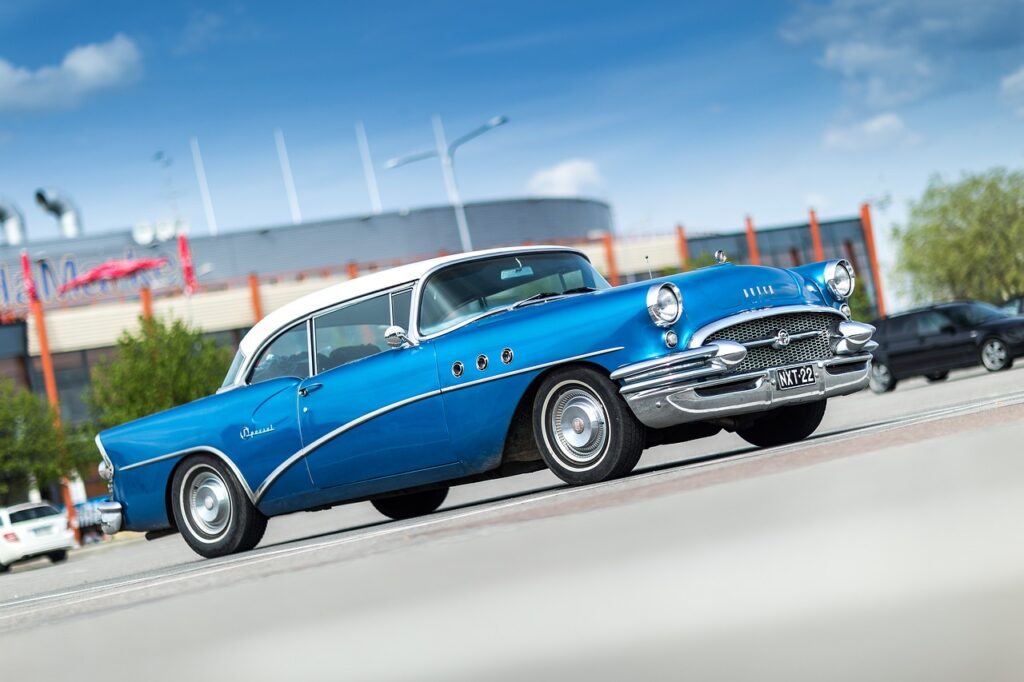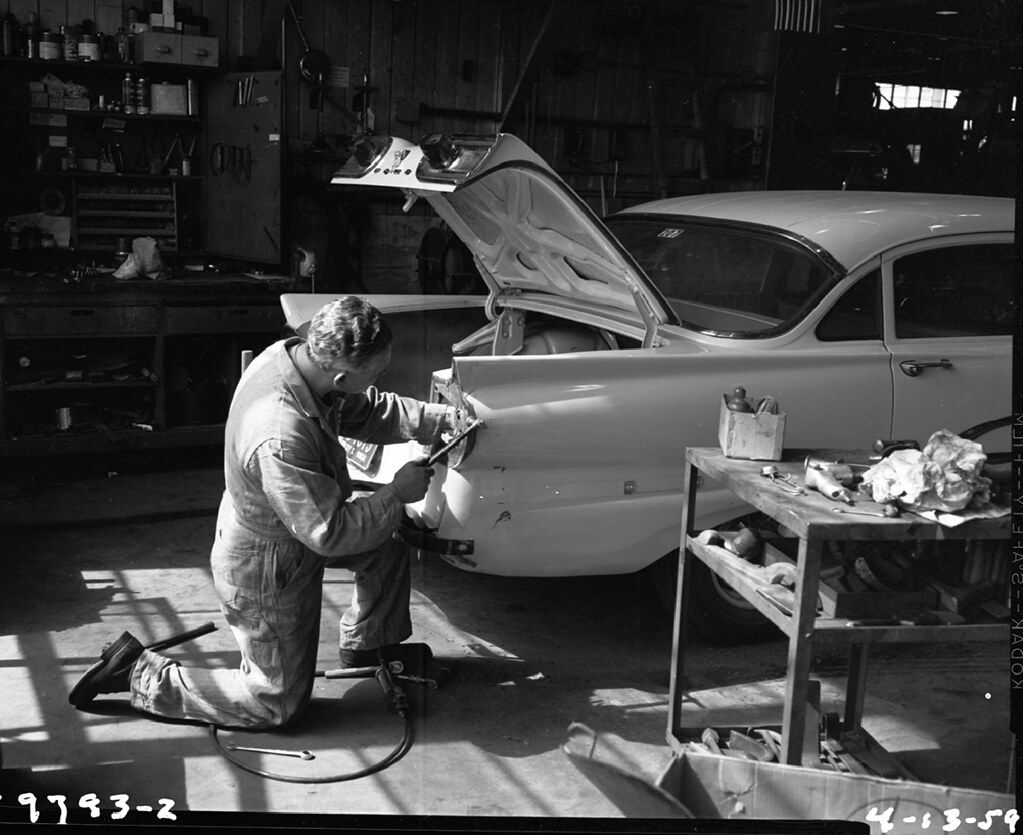Let’s be real, the automotive world is a rollercoaster of emotions. We see new models emerge with sleek designs and cutting-edge tech, ready to captivate us, while others, sometimes beloved, must sadly make their exit. It’s a bittersweet reality that even the most innovative, stylish, or performance-driven vehicles aren’t immune to the chopping block, often falling victim to shifting consumer tastes, rising costs, or evolving regulations. It’s like a beloved TV show getting cancelled just when it was hitting its stride – frustrating, to say the least.
But what really stings is when a car bows out before its prime. These aren’t the outright failures or the models that lingered far past their expiration date. No, we’re talking about the ‘Early Exit Club’ – cars that had character, pushed boundaries, or cultivated loyal followings, only to be phased out way too soon. For car lovers, these stories aren’t just about nostalgia; they’re a fascinating look into the intricate dance between innovation, market demand, and the cold, hard realities of profit margins. It’s a reminder that sometimes, the best cars are those that dared to be different, even if their journey was cut short.
So, buckle up as we take a deep dive into some truly cool cars that exited the stage well before their final curtain call. These vehicles weren’t just metal and machinery; they were statements, experiments, and, for many, a source of pure driving joy. From ambitious mid-engine sports cars to quirky hybrids and luxury cruisers, get ready to revisit the legends that left us wanting more, proving that even outstanding cars can’t escape the inevitable ‘discontinued’ label, often leaving behind a legacy that only grows stronger with time.
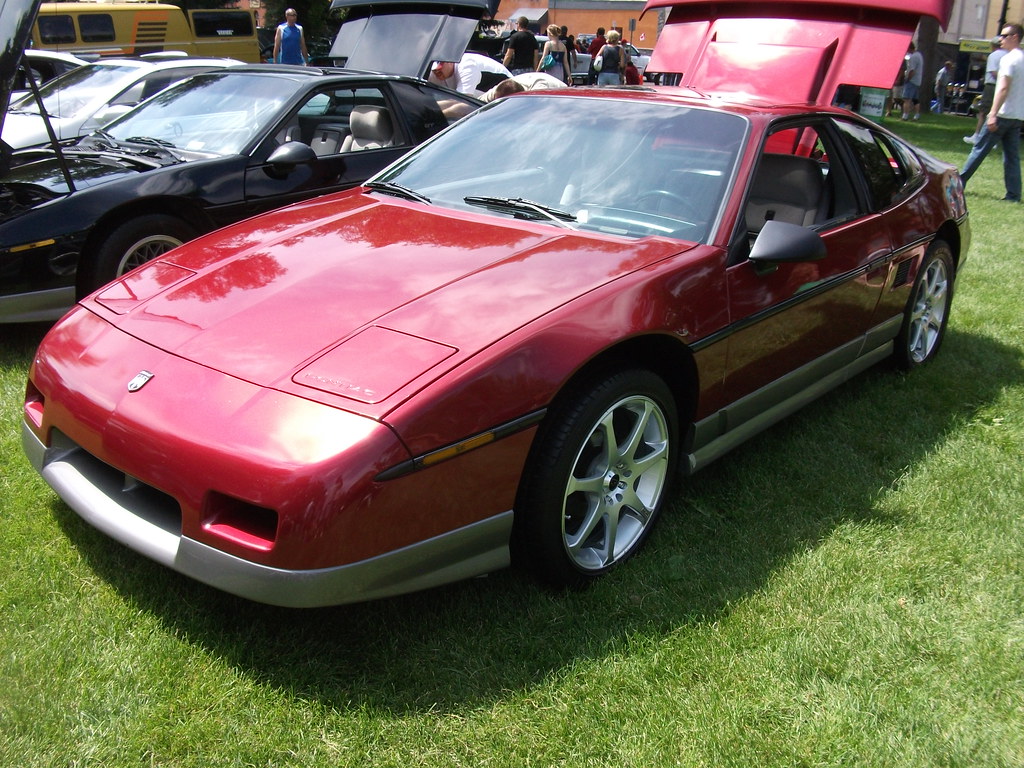
1. **Pontiac Fiero – The Mid-Engine Experiment That Flared Out**
When we talk about cars that were ahead of their time, the Pontiac Fiero absolutely has to be at the top of the list. Introduced between 1984 and 1988, this two-seat, mid-engine sports car was nothing short of ambitious for General Motors. Imagine, a lightweight, rear-wheel-drive stunner that offered sporty looks without the supercar price tag, making flashy design accessible to the masses. It dared to be different, a genuine outlier among American mass-market cars, and for that, it earned a special place in automotive lore.
However, even groundbreaking innovation isn’t always enough to guarantee longevity. The Fiero’s journey was plagued by a series of unfortunate events, including initial reliability issues that cast a shadow over its reputation. Add to that the ever-changing landscape of safety regulations and, eventually, declining sales, and GM found itself in a tough spot. After just five years, the plug was pulled, leaving enthusiasts wondering what could have been if it had been given more time to mature.
Despite its short run, the Fiero’s legacy is undeniable. Enthusiasts still fondly remember its quirky design, the unique handling quirks that made it a driver’s car, and the sheer audacity of its existence. Today, it thrives in collector circles, a testament to its enduring appeal and the belief held by many that it was discontinued far too soon. The Fiero stands as a powerful reminder that sometimes, pushing the boundaries of innovation can come with a price, but it also creates unforgettable machines.
Car Model Information: 1985 Pontiac Fiero 2dr Coupe GT 4-Spd
Name: Pontiac Fiero
Caption: 1988 Fiero Formula
Manufacturer: Pontiac (automobile)
Production: August 1983 – August 16, 1988,370,168 produced
ModelYears: 1984 – 1988
Successor: Pontiac Solstice
Assembly: Pontiac, Michigan
Designer: Hulki Aldikacti,George Milidrag
Class: Sports car
BodyStyle: fastback,notchback
Platform: GM P platform
Layout: Rear mid-engine, rear-wheel-drive layout
Engine: {{cvt,151,CID,L,1,disp=flip,Iron Duke engine#LR8,Inline-four engine
Transmission: Turbo-Hydramatic 125,Manual transmission,Getrag 282 transmission,Isuzu
Wheelbase: 2373 mm
Abbr: on
Length: 4072 mm
Width: 1750 mm
Height: 1191 mm
Weight: 1116 to
Categories: All articles with unsourced statements, Articles with short description, Articles with unsourced statements from February 2012, Articles with unsourced statements from July 2024, Articles with unsourced statements from September 2011
Summary: The Pontiac Fiero is a rear mid-engine, light sports car manufactured and marketed by Pontiac for model years 1984 – 1988. Intended as an economical commuter car with modest performance aspirations, it was Pontiac’s first two-seater since their 1926 to 1938 coupes, and the first mass-produced, rear mid-engine car by any American manufacturer.
In addition to using 4- and 6-cylinder engines to help Pontiac meet America’s ‘CAFE’ average fuel economy requirements, the Fiero’s chassis and structure technology used non-load-bearing, composite body-panels, contributing to the car’s light-weight and its unique selling proposition. Pontiac engineers modified the design over its life to enhance its performance and reposition the two-seater closer to the implications of its sporty configuration.
The Fiero 2M4 (two-seat, mid-engine, four-cylinder) placed on Car and Driver magazine’s Ten Best list for 1984, and was the Official Pace Car of the Indianapolis 500 for 1984.
A total of 370,168 Fieros were manufactured over five years’ production, its mild performance, reliability and safety issues becoming points of criticism. The Fiero was discontinued after annual sales fell steadily.
Get more information about: Pontiac Fiero
Buying a high-performing used car >>>
Brand: Pontiac Model: Fiero
Price: $9,995 Mileage: 43,830 mi.
Read more about: Beyond the Neon Glow: Revisiting 14 Unforgettable ’80s Sports Cars That Defined a Decade of Driving Passion
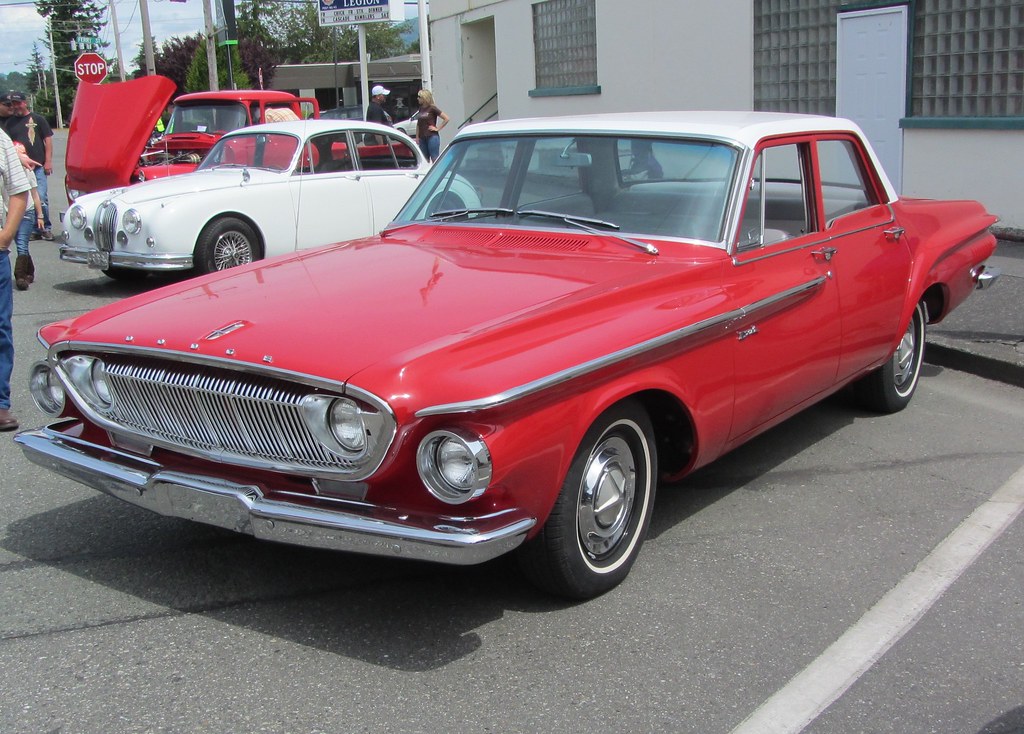
2. **Dodge Dart (PF) – Compact Sedan Before the SUV Boom**
Ah, the Dodge Dart (PF). This compact sedan, which saw its production cease in 2016, is a classic case of a car caught in the crosshairs of a rapidly changing automotive landscape. It arrived on the scene with an earnest attempt to offer drivers a stylish, compact sedan option, a segment that, at the time, was still a significant player. The Dart had favorable reviews and aimed to deliver a blend of practicality and panache, but its timing couldn’t have been worse.
Just as the Dart was trying to find its footing, the market began its inexorable shift. SUVs and crossover models weren’t just gaining popularity; they were exploding. Consumers’ tastes were gravitating towards higher ride heights, more cargo space, and the rugged aesthetic of utility vehicles. This monumental shift meant that even a well-intentioned and decent sedan like the Dart struggled to maintain sales momentum, leading automakers to reallocate precious resources to more profitable segments. It was an uphill battle that few sedans could win.
For many loyal drivers, the Dart represented a genuine “sweet spot” in the market. It was compact enough for city driving, offered decent performance, prioritized comfort, and provided a more affordable sedan choice than many of its competitors. Its discontinuation left a noticeable void for those who still preferred the engaging driving dynamics of a sedan over the bulkier, higher-riding nature of an SUV. It’s a bittersweet thought for those who cherished its balanced approach to everyday motoring.
Car Model Information: 2015 Dodge Dart SXT
Name: Dodge Dart
Caption: 1966 Dodge Dart GT 2-door hardtop
Manufacturer: Dodge
Production: 1959–1976 (US market)
ModelYears: 1960–1976 (US market)
Class: Full-size
Layout: FR layout
Predecessor: Dodge Coronet#Fourth generation (1957–1959)
Related: Plymouth Valiant,Chrysler Valiant,Dodge Phoenix
Successor: Dodge Aspen,Dodge Diplomat,Talbot Tagora
Categories: 1970s cars, All articles with unsourced statements, Articles with short description, Articles with unsourced statements from December 2023, Articles with unsourced statements from May 2025
Summary: The Dodge Dart is a line of passenger cars produced by Dodge from the 1959 to 1976 model years in North America, with production extended to later years in various other markets.
The production Dodge Dart was introduced as a lower-priced full-size model in 1960 and 1961, but became a mid-size car for one model year for 1962, and was then reduced to a compact for two generations, from 1963 to 1976.
Chrysler had first used ‘Dart’ name plates on two Italian styled show cars, in 1956 and 1957, before it became a Dodge model name. The Dart nameplate was resurrected for a Fiat-derived compact car that was introduced in 2012.
Get more information about: Dodge Dart
Buying a high-performing used car >>>
Brand: Dodge Model: Dart
Price: $9,995 Mileage: 143,082 mi.
Read more about: The True Cost of Ownership: 14 Vehicles Known to Relentlessly Drain Your Savings Through Constant Repairs
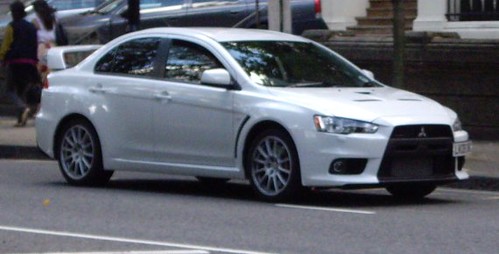
3. **Mitsubishi Lancer Evolution – The Rally King Cut Short**
Prepare for a collective sigh from driving purists everywhere, because few discontinued car models are as sorely missed as the Mitsubishi Lancer Evolution, affectionately known as the ‘Evo’. For nearly 25 years, this car was a titan, a rally-bred monster delivering an intoxicating cocktail of turbocharged power, razor-sharp handling, and a hardcore enthusiast pedigree that few modern cars even dare to attempt. It wasn’t just a car; it was a legend forged in the crucible of motorsport.
The Evo amassed numerous accolades during its illustrious career, including being named Playboy magazine’s Sports Car winner in 2004, cementing its status not just among gearheads, but in wider popular culture. This isn’t surprising, given its relentless pursuit of performance and its distinctive, aggressive styling that screamed speed. It cultivated a passionate fanbase that remains fiercely loyal to this day, a testament to the emotional connection it forged with its owners.
However, even legends aren’t immune to corporate decisions. Mitsubishi eventually pulled the plug on the Evo in the U.S. and globally, citing a familiar refrain: rising regulatory costs, increasingly stringent emissions challenges, and, yes, that ever-present shift in consumer demand towards SUVs and crossovers. Critics were vocal, arguing that Mitsubishi should have found a way to modernize this icon rather than abandon it, especially given its unwavering popularity and the almost mythical status it held within the automotive community.
To this day, the Evo remains a benchmark for performance sedans, a yardstick against which others are measured. Its absence is acutely felt whenever automakers try to replicate its raw combination of grip and speed, often falling short of the magic that the Evo so effortlessly delivered. The tragic irony is that its spiritual successor is now rumored to take the form of a crossover, much like what happened to the Eclipse, a fate that many enthusiasts lament as a dilution of its purebred performance heritage.
Car Model Information: 2024 Subaru Outback Onyx Edition
Name: Mitsubishi Lancer Evolution
Caption: Mitsubishi Lancer Evolution X
Manufacturer: Mitsubishi Motors
Production: 1992–2016
BodyStyle: sedan (car),station wagon
Assembly: Japan:,{{blist,Okazaki, Aichi,Kurashiki, Okayama
Class: Sport compact car
Layout: Front-engine, four-wheel-drive
Engine: Straight-4,Mitsubishi Sirius engine#4G63,Mitsubishi 4B1 engine#4B11T
Transmission: Twin Clutch SST,5-speed automatic (2002, 2006–2007),manual transmission,6-speed manual (2003–2008)
Predecessor: Mitsubishi Galant VR-4
Related: Mitsubishi Lancer,Mitsubishi Lancer WRC,Mitsubishi Racing Lancer
Categories: 2000s cars, 2010s cars, All-wheel-drive vehicles, All Wikipedia articles in need of updating, All Wikipedia articles that are incomprehensible
Summary: The Mitsubishi Lancer Evolution, popularly referred to as the “Evo”, is a sports sedan and rally car based on the Lancer that was manufactured by Japanese manufacturer Mitsubishi Motors from 1992 until 2016. There have been ten official versions to date, and the designation of each model is most commonly a Roman numeral. All generations use two-litre intercooled turbo inline four-cylinder engines and all-wheel drive systems.
The Lancer was originally intended only for Japanese markets, but demand on the “grey import” market led the Evolution series to be offered through Ralliart dealer networks in the United Kingdom and in various European markets from around 1998. Mitsubishi decided to export the eighth generation Evolution to the United States in 2003 after witnessing the success Subaru had in that market the previous year with the Subaru Impreza WRX.
All domestic-market versions, until the release of the Evolution IX in 2005, were limited by a gentlemen’s agreement between Japanese car manufacturers to advertise no more than 280 PS (206 kW; 276 hp). However, sources say Mitsubishi had already been producing cars with more power but had been underrating the official power outputs in order to comply with the agreement. Therefore, each subsequent version has unofficially evolved above the advertised power figures, with the Japanese-market Evolution IX reaching an alleged output of around 320 PS (235 kW; 316 hp). Various special versions available in other markets, particularly the UK, have official power outputs up to 446 PS (328 kW; 440 hp).
The tenth and final generation of the Lancer Evolution, the Evolution X, was launched in Japan in 2007, and overseas markets in 2008. The Evolution X was produced for almost 10 years until Mitsubishi retired the Lancer Evolution in April 2016.
Get more information about: Mitsubishi Lancer Evolution
Buying a high-performing used car >>>
Brand: Mitsubishi Model: Lancer Evolution
Price: $32,397 Mileage: 17,174 mi.
Read more about: Gone But Not Forgotten: 14 Beloved Cars That Vanished Unexpectedly from Production
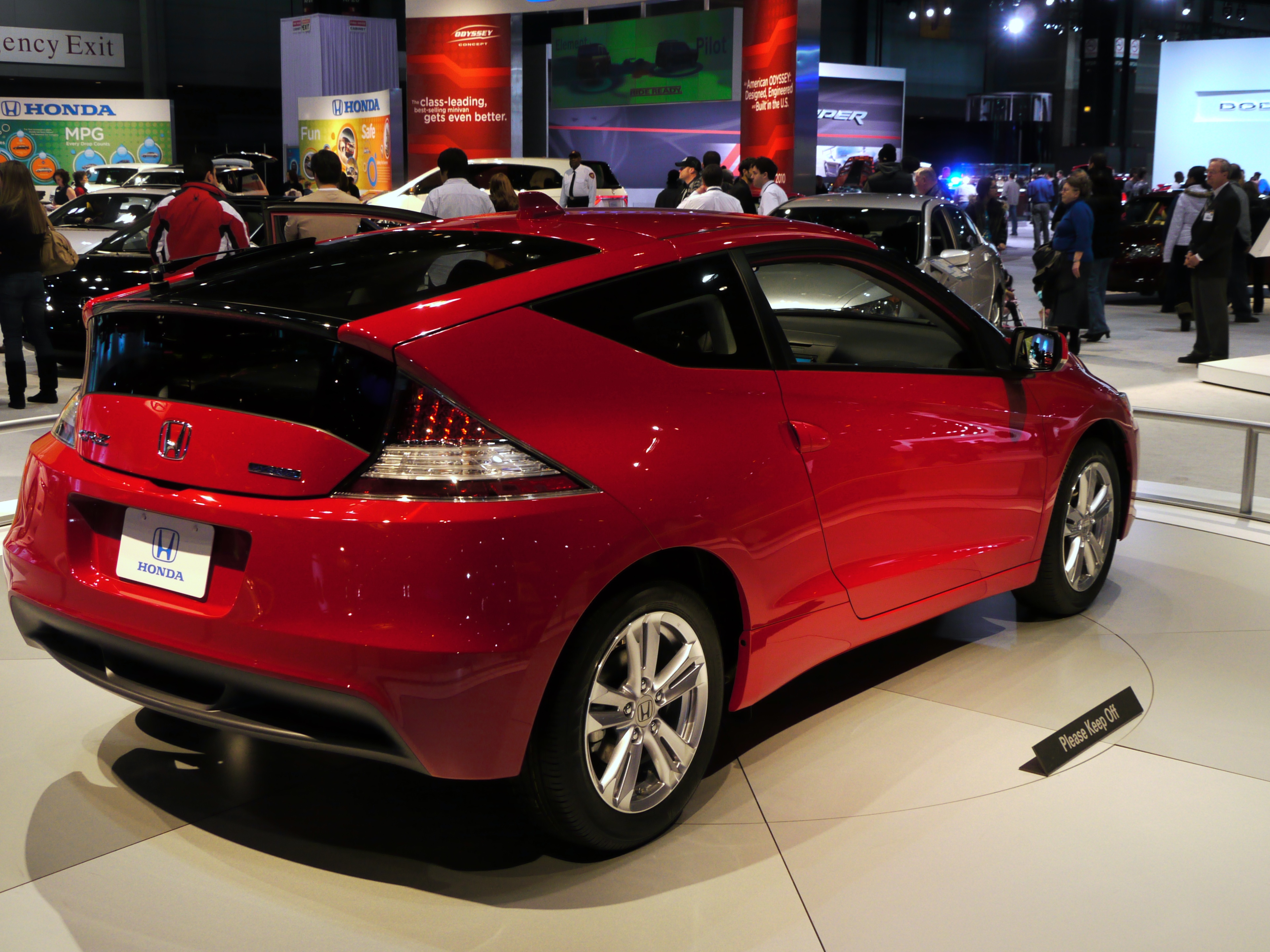
4. **Honda CR-Z – The Fun Hybrid That Wanted More Time**
Remember when hybrids were, well, a bit… boring? They were practical, efficient, and great for the planet, but rarely did they spark joy in the driving enthusiast’s heart. Then along came the Honda CR-Z, a discontinued car model that genuinely tried to change that narrative. It was a sporty hybrid hatchback, combining an interesting, almost futuristic style with hybrid efficiency, and crucially, a light, fun factor that aimed to inject some excitement into the eco-conscious segment.
The CR-Z entered the market at a pivotal moment, a time when hybrids were predominantly valued solely for their fuel economy, not their flair or driving enjoyment. Honda bravely attempted to merge these two worlds, offering a car that promised both responsible motoring and a smile-inducing drive. Its unique identity and strong eco credentials quickly endeared it to a devoted fan base who appreciated its bold attempt to redefine what a hybrid could be.
Despite its loyal following and admirable intentions, the CR-Z never quite translated into massive sales numbers. While it carved out its niche, it struggled to achieve widespread commercial success. Honda ultimately discontinued it after about five years, a relatively short run for a vehicle with such a distinct personality and purpose. It was a casualty of a market still figuring out its relationship with alternative powertrains, and perhaps a bit too early for its unique blend of attributes to truly resonate with the broader public.
Many believe that if hybrids and electrics hadn’t been in such early transitional phases, models like the CR-Z would have seen far stronger demand. As the automotive world continues its inexorable march towards full EVs, the CR-Z is often remembered as a pioneering ‘bridge car’ – a fascinating experiment that genuinely deserved more time to prove its potential and show the world that green driving could, indeed, be a whole lot of fun.
Car Model Information: 2011 Honda CR-Z EX
Name: Honda CR-Z (ZF1/ZF2)
Manufacturer: Honda
Production: 2010–2016
ModelYears: 2011–2016
Assembly: Suzuka, Mie
Class: Sport compact car
BodyStyle: liftback
Layout: Front-engine, front-wheel-drive
Related: Honda Insight,Honda Fit Hybrid
Engine: ubl
Motor: MF6 DC brushless motor
Transmission: Continuously variable transmission
Wheelbase: 2435 mm
Abbr: on
Length: 4080 mm
Width: 1740 mm
Height: 1395 mm
Weight: convert
Predecessor: Honda CR-X,Honda Insight#First generation,Honda CR-X del Sol
Categories: All Wikipedia articles in need of updating, All articles needing additional references, All articles with dead external links, All articles with unsourced statements, Articles needing additional references from November 2023
Summary: The Honda CR-Z is a sport compact hybrid electric vehicle manufactured by Honda and marketed as a “sport hybrid coupe.” It combines a gasoline-electric hybrid drivetrain with features typical of a sports car, including a standard six-speed manual transmission and a 2+2 seating layout (except in North America, where it was offered only as a two-seater).
The CR-Z was seen as a spiritual successor to the second-generation Honda CR-X, sharing similarities in name and exterior design.
In the United States, the CR-Z was classified as an Advanced Technology Partial Zero Emissions Vehicle by the California Air Resources Board. It was the third Honda hybrid available with a manual transmission, following the Insight and Civic Hybrid, and the only one in its class to offer this option.
The CR-Z used the sixth generation of Honda’s Integrated Motor Assist (IMA) technology, first introduced with the original Insight. Sales began in Japan in February 2010, followed by the United States in August 2010. Production of the CR-Z ended at the end of 2016 to make room for the Accord Hybrid and Clarity.
Get more information about: Honda CR-Z
Buying a high-performing used car >>>
Brand: Honda Model: CR-Z
Price: $11,985 Mileage: 118,755 mi.

5. **Mercedes-Benz SLS AMG – A Modern Classic with Iconic Doors, Gone Too Soon**
Prepare for a moment of quiet reverence, because we’re talking about the Mercedes-Benz SLS AMG. This isn’t just any car; it’s a stunning gullwing coupe, a genuine modern classic that etched its place in automotive history in a remarkably short span. Former road test editor Nate Martinez captured its essence perfectly in our 2013 First Test of the SLS AMG Black Series, describing it as, “This is an SLS like no other. It looks, acts, sounds, and yes, even smells like something concocted specifically to haul ass down the Mulsanne Straight.” Talk about an endorsement!
What made the SLS AMG truly special was its genesis: it was developed entirely from the ground up by Mercedes-Benz’s legendary AMG division. This wasn’t a modified existing model; it was a pure, unadulterated performance machine, born to dominate. Despite being in production for only a brief period from 2010 to 2014, Mercedes-Benz introduced several remarkable versions, including a groundbreaking all-electric model, showcasing its versatility and forward-thinking engineering. Over those years, it wasn’t just a car; it transformed from a formidable German muscle car into a world-class sports car, evolving its capabilities with each iteration.
The most distinctive feature, of course, was those iconic gullwing doors – a direct homage to the legendary 300 SL. These weren’t just a styling gimmick; they were a statement, a theatrical entrance every time you approached the car, setting it apart from virtually everything else on the road. While the impressive Mercedes-AMG GT now carries on its high-performance legacy, it does so without that instantly recognizable, jaw-dropping design element. The absence of those dramatic gullwing doors serves as a poignant reminder of what a truly special and bold design choice the SLS AMG represented.
Car Model Information: 2024 Subaru Outback Onyx Edition
Name: Mercedes-Benz SLS AMG
Manufacturer: Mercedes-AMG
Production: January 2010–2014
ModelYears: 2010–2015
Assembly: Sindelfingen
Designer: Mark Fetherston (2007)
Class: Sports car
BodyStyle: coupe
Layout: Front mid-engine, rear-wheel-drive layout,all-wheel drive
Engine: Mercedes-Benz M156 engine#M159,V8 engine
Transmission: dual-clutch,automatic transmission
Wheelbase: 2680 mm
Abbr: on
Length: 4638 mm
Width: 1939 mm
Height: 1252 mm
Weight: {{convert,1619,kg,lb,0,abbr=on
Predecessor: Mercedes-Benz SLR McLaren
Doors: Gull-wing door
Categories: All articles needing additional references, All articles with bare URLs for citations, Articles needing additional references from November 2018, Articles with bare URLs for citations from August 2022, Articles with hAudio microformats
Summary: The Mercedes-Benz SLS AMG (C197 / R197) is a front mid-engine, 2-seater, limited production sports car developed by the Mercedes-AMG division of German automotive manufacturer Mercedes-Benz, with the assistance of David Coulthard. The car is the successor to the Mercedes-Benz SLR McLaren. SLS stands for “Super Leicht Sport” (Super Light Sport).
The SLS was the first Mercedes-Benz automobile designed and built from scratch entirely by AMG. Upon its introduction at the 2009 Frankfurt Motor Show, the SLS AMG’s 420 kW; 563 hp (571 PS) M159 engine was according to AMG “the world’s most powerful naturally aspirated production series engine” ever produced.
An electric version of the car, the SLS AMG Electric Drive, was presented at the 2012 Paris Motor Show. Production ended in 2014 with the introduction of the SLS AMG GT Final Edition.
As compared to its predecessor (the SLR McLaren), the SLS is per Mercedes-AMG head Tobias Moers, the faster car on the track, both in the hands of normal drivers as well as race car drivers. The Mercedes-McLaren SLR came in at 1,750 kg (3,858 lb). The SLS, however, has a curb weight of 1,619 kg (3,569 lb) when equipped with the standard wheels.
Get more information about: Mercedes-Benz SLS AMG
Buying a high-performing used car >>>
Brand: Mercedes-Benz Model: SLS AMG
Price: $32,397 Mileage: 17,174 mi.
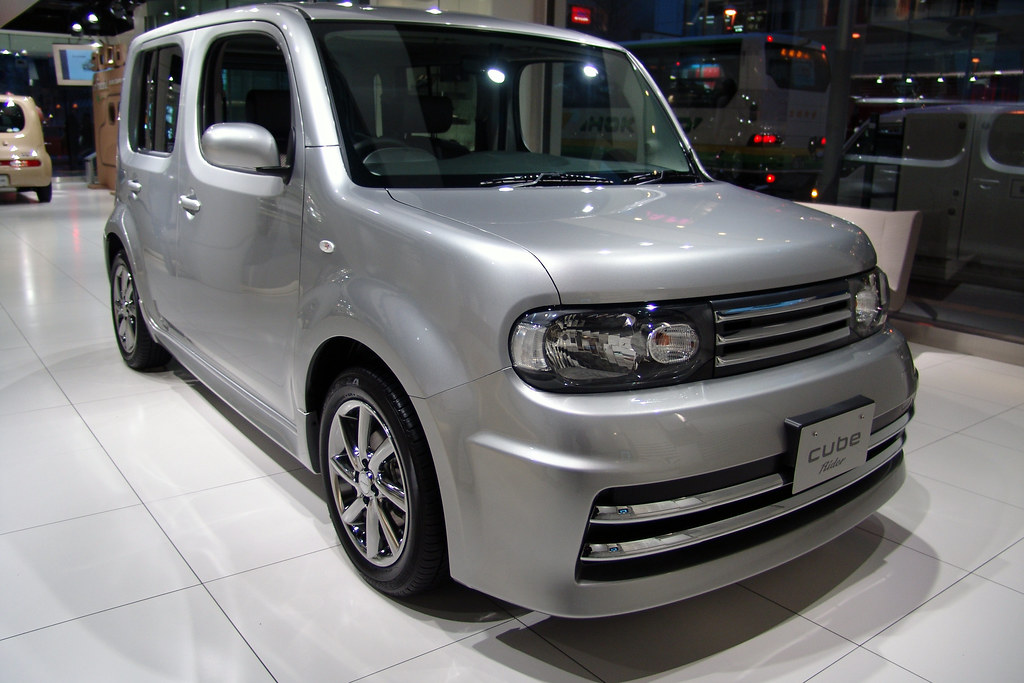
6. **Nissan Cube – The Uniquely Charming Box on Wheels That Stood Out from the Crowd**
If ever there was a car that fully embraced its unique identity, it was the Nissan Cube. Easily the most adorable and unconventional SUV Nissan ever dared to bring to our shores, the Cube stood out from the moment it rolled off the assembly line, primarily for its undeniably unique styling. In a world of increasingly aerodynamic and sleek designs, the Cube was unapologetically boxy, a delightful defiance of convention that many found incredibly charming.
This wasn’t a car trying to blend in; it was a car that celebrated its distinct form, confidently owning its squared-off edges and asymmetrical rear window. There was something undeniably endearing about its commitment to its aesthetic, making it a conversation starter wherever it went. Beyond its polarizing looks, the Cube also earned recognition where it mattered most, being named a Top Safety Pick by the IIHS, proving that style could indeed coexist with substance.
The Cube enjoyed its best sales year in 2010, moving 22,968 units, which, while respectable, never quite propelled it to the same level of runaway success as its closest competitor, the Scion xB. Ultimately, despite its devoted fan base and quirky appeal, production of the Nissan Cube came to an end in 2014. It’s a testament to the fact that sometimes, even the most charming and distinct vehicles struggle to find a large enough audience in a market driven by evolving trends. The Cube left us too soon, but its bold, boxy spirit lives on in the memories of those who dared to drive something truly different.
It’s wild to think that even after pouring over those fascinating tales of premature automotive exits, we’ve only just scratched the surface. The automotive landscape is a constantly evolving beast, and sometimes, the cars that shine brightest are those that, for one reason or another, had their light dimmed far too soon. We’re talking about vehicles that became cult classics, luxury statements that defined an era, or segment pioneers that truly made bold statements, only to vanish from showrooms. But just because they’re gone, doesn’t mean they’re forgotten, and who knows, some might even deserve a spectacular comeback! Let’s dive deeper into a second collection of these unforgettable machines.
Car Model Information: 2013 Nissan Cube 1.8 S
Name: Nissan Cube
Manufacturer: Nissan
Production: 1998–2019
Assembly: Yokosuka, Kanagawa
Class: Mini MPV
BodyStyle: hatchback
Layout: Front-engine, front-wheel-drive,Front-engine, four-wheel-drive
Platform: Nissan B platform
Successor: Nissan Note#E12,Nissan Lafesta,Nissan Juke
ModelYears: 2009–2014 (North America)
Categories: 2000s cars, 2010s cars, All-wheel-drive vehicles, All Wikipedia articles needing clarification, All articles with specifically marked weasel-worded phrases
Summary: The Nissan Cube is a mini MPV produced by carmaker Nissan between 1998 and 2019. Initially sold only in Japan, the Cube was sold in North American markets from 2009 to 2014, and in European markets from 2009 to 2011. In Japan, it was exclusive to Nissan Red Stage dealerships. It is a slightly larger load-carrying alternative to the Nissan Micra hatchback. While production for the North American market ended in 2014, the Japanese-market Cube lasted until December 2019.
Get more information about: Nissan Cube
Buying a high-performing used car >>>
Brand: Nissan Model: Cube
Price: $6,995 Mileage: 220,000 mi.
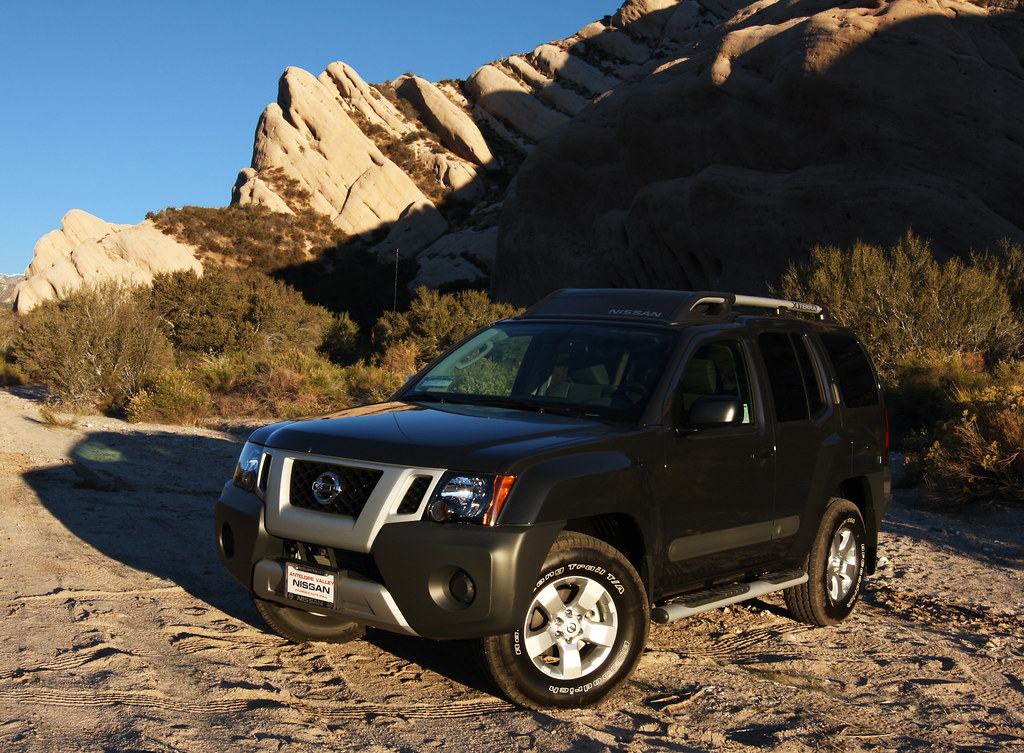
7. **Nissan Xterra – The Rugged Icon Begging for a Remake**
When we talk about SUVs that truly delivered on the ‘utility’ part of the acronym, the Nissan Xterra immediately springs to mind. This wasn’t just another grocery-getter; it was the rugged, no-nonsense companion for adventure-seekers, earning its stripes with strong sales in its early years. The Xterra was essentially an SUV built for those who valued capability and a straightforward, tough aesthetic over urban glamour. It embodied the spirit of exploration, and for many, it was the perfect vehicle to tackle trails and weekend getaways.
However, even a beloved, burly SUV like the Xterra couldn’t escape the inevitable. Despite its initial popularity, it spent a considerable 15 years on the market with only minimal updates. While that’s a testament to its solid foundation, it also became a contributing factor to its declining sales over time. As the market shifted towards more refined, car-like crossovers, the Xterra’s rugged, uncompromised nature started to feel less aligned with mainstream consumer preferences, leading to its discontinuation in the U.S. after the 2015 model year.
Yet, the Xterra’s legacy is far from faded. Throughout its lifespan, it garnered numerous accolades, including the coveted MotorTrend SUV of the Year award, a clear indication of its intrinsic value. Interestingly, many enthusiasts still point to the early-generation models, specifically from 2000 to 2004, as the pinnacle of its styling, embodying that perfect blend of toughness and iconic design. It’s no wonder that a significant chorus of fans and even dealers have been vocal in their calls for its return.
And honestly, why not? With the insatiable demand for SUVs continuing to dominate the market, the idea of a modern Xterra, updated for today’s tech and safety standards while retaining its core rugged identity, isn’t just a nostalgic pipe dream. It feels like a genuine opportunity. Imagine a new Xterra, built for the digital age but still ready to conquer the great outdoors – that’s a comeback story we’d all love to see, and there’s truly no reason why it couldn’t be possible.
Car Model Information: 2004 Nissan Xterra XE
Name: Nissan Xterra
Caption: Second-generation Nissan Xterra
Manufacturer: Nissan
Aka: Nissan Paladin (China),Nissan Roniz (Iran),Dongfeng Oting (China)
Production: 1999–2015,2003–2015 (China)
Class: Compact sport utility vehicle
BodyStyle: Sport utility vehicle
Layout: Front-engine, rear-wheel-drive layout,Front-engine, four-wheel-drive layout
Successor: Nissan Rogue,Nissan Murano,Nissan Terra
ModelYears: 2000–2015
Categories: 2000s cars, 2010s cars, All-wheel-drive vehicles, Articles with short description, CS1 Brazilian Portuguese-language sources (pt-br)
Summary: The Nissan Xterra is a truck-based compact SUV manufactured and marketed by Nissan from 1999 to 2015 across two generations; the first (1999–2004) sharing a platform and many of its major exterior parts from the front doors forward with the Nissan (D22) Frontier pickup – and the second (2005–2015) sharing the Nissan F-Alpha platform with the Frontier and Pathfinder.
Sporting a name licensed from the XTERRA off-road triathlon race series, the vehicle was positioned by Nissan as functional and reliable outdoor gear, epitomized by its marketing tagline “Everything You Need, Nothing You Don’t.”
It was developed in La Jolla, California, by Nissan Design International (NDI)’s (now Nissan Design America) then Director of Design Tom Semple, and became the first Nissan vehicle completely conceived, developed and manufactured in the United States. According to Jerry Hirshberg, president of Nissan Design International (NDI), “the impetus for Xterra designers was to create an affordable, rugged, quality piece of equipment”. He later described it as “a garage tool that says, ‘treat me rough’ – it’s designed to look better dirty than clean.”
While the two Xterra generations differed significantly, both prioritized ruggedness, practicality, and affordability over luxury. Traditional body-on-frame construction and underbody skid plates reflected both its truck heritage and off-road capability. Throughout its lifetime the Xterra used a two-box design with a prominent two-tiered roof enabling second row stadium seating, C-pillar-mounted rear door handles, asymmetrical rear window, and a distinctive tailgate bump-out for an inside mounted first aid kit. For hauling exterior loads a roof rack with a removable forward gear basket was standard equipment.
Road & Track described the Xterra as “an honest SUV that doesn’t try to be a luxury car alternative, nor tries to hide its truck underpinnings”. Jalopnik called it a “knockoff of the Land Rover Discovery”. The Washington Post described it as “rugged without bravado”.
First generation manufacture took place at Nissan’s Decherd, Tennessee Plant (engines) and Smyrna Assembly plant (final assembly). Second generation Xterras were manufactured at the company’s Canton, Mississippi plant (final assembly). Variants were also manufactured in Brazil and China.
Get more information about: Nissan Xterra
Buying a high-performing used car >>>
Brand: Nissan Model: Xterra
Price: $5,885 Mileage: 144,530 mi.
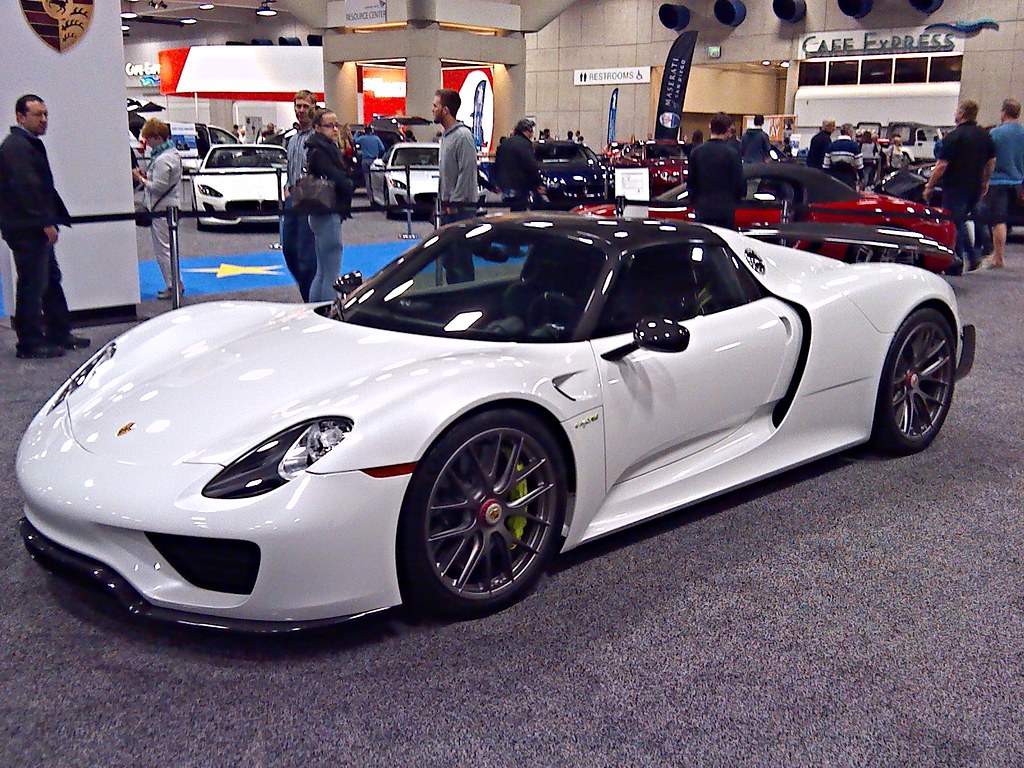
8. **Porsche 918 Spyder – The Hypercar That Redefined Performance**
Alright, let’s talk hypercars. You know, those automotive deities that exist in a realm of their own, pushing the boundaries of speed, technology, and sheer desirability. While the hypercar “holy trinity” of LaFerrari, P1, and the 918 Spyder are all equally deserving of legendary status, we’re giving a special shout-out to the Porsche 918 Spyder for this list. It’s not about playing favorites, Ferrari and McLaren, it’s just that the 918 holds a particularly special place as a pioneer in hybrid performance, setting a benchmark for what was to come.
The 918 Spyder wasn’t just fast; it was a visionary statement. It proved that blistering performance and cutting-edge hybrid technology weren’t mutually exclusive. This iconic hybrid effortlessly earned its spot among the all-time greats, boasting not just mind-bending acceleration and track capabilities, but also a timeless aesthetic that refuses to age. Its design, performance, and technological prowess cemented its place as a truly iconic vehicle, showcasing Porsche’s engineering mastery in a spectacular fashion.
What makes the 918 Spyder’s inclusion here so poignant is how quickly it arrived, dominated, and then made its exit, leaving an indelible mark on the automotive world in a flash. It set a new standard for hypercar performance, blending traditional combustion power with electric motors to create an exhilarating, efficient, and ultimately groundbreaking driving experience. Its relatively short production run only amplified its exclusivity and legendary status among collectors and enthusiasts alike.
This hypercar legend truly left an enduring legacy, influencing subsequent performance vehicles and proving that electrification could enhance, rather than compromise, the thrill of driving. The 918 Spyder stands as a testament to bold engineering and visionary design, a car that arrived, conquered, and then gracefully bowed out, securing its place in history as a true icon of its era with its timeless appeal. It’s the kind of car that makes you wonder what future limited-run masterpieces Porsche has up its sleeve.
Car Model Information: 2024 Subaru Outback Onyx Edition
Name: Porsche 918 Spyder
Manufacturer: Porsche AG
Production: September 2013–June 2015
ModelYears: 2013–2015
Assembly: Stuttgart,Zuffenhausen
Predecessor: Porsche Carrera GT
Successor: Porsche Mission X
Class: Sports car
BodyStyle: Targa top,coupé
Layout: Mid-engine, four-wheel-drive layout
Doors: Car door#Conventional
Engine: cvt,Porsche V8 engine
Transmission: Dual clutch transmission#Porsche
Battery: lithium-ion battery
Motor: electric motor
Drivetrain: PHEV
Range: EPA
ElectricRange: cvt
Wheelbase: cvt
Length: cvt
Width: cvt
Height: cvt
Weight: cvt
Designer: Michael Mauer
Powerout: cvt
Categories: All articles containing potentially dated statements, Articles containing potentially dated statements from October 2014, Articles with short description, CS1 Dutch-language sources (nl), CS1 German-language sources (de)
Summary: The Porsche 918 Spyder is a high performance sports car manufactured by German marque Porsche. The 918 Spyder is a plug-in hybrid powered by a mid-mounted naturally aspirated 4.6 L (4,593 cc) V8 engine, developing 447 kW (608 PS; 599 hp) at 8,700 RPM, with two electric motors delivering an additional 210 kW (286 PS; 282 hp) for a combined output of 652 kW (875 hp) and 1,280 N⋅m (944 lbf⋅ft) of torque. The 918 Spyder’s 6.8 kWh lithium-ion battery pack delivers an all-electric range of 19 km (12 mi) under the US Environmental Protection Agency’s five-cycle tests.
Production began on 18 September 2013, with deliveries initially scheduled to begin in December 2013, and a starting price of ≈€781,000 (US$845,000 or £711,000). The 918 Spyder was sold out in December 2014 and production ended in June 2015.
The 918 Spyder was first shown as a concept at the 80th Geneva Motor Show in March 2010. On 28 July 2010, after 2,000 declarations of interest, the supervisory board of Porsche AG approved series development of the 918 Spyder. The production version was unveiled at the September 2013 Frankfurt Motor Show. Porsche also unveiled the RSR racing variant of the 918 at the 2011 North American International Auto Show, which combined hybrid technology first used in the 997 GT3 R Hybrid, with styling from the 918 Spyder. However, the 918 RSR did not make it to production. The 918 Spyder was the second plug-in hybrid car manufactured by Porsche, after the 2014 Panamera S E-Hybrid.
Set to be the replacement for the 918, the Porsche Mission X was presented first, at the preamble to the centenary of the 91st 24 Hours of Le Mans, in June of 2023 and to be produced in 2025.
Get more information about: Porsche 918 Spyder
Buying a high-performing used car >>>
Brand: Porsche Model: 918 Spyder
Price: $32,397 Mileage: 17,174 mi.
Read more about: Unleashed Power: A Top Gear Enthusiast’s Guide to the 10 Fastest Porsche Road Cars Ever Built

9. **Rolls-Royce Phantom Coupe – British Luxury, A Statement Cut Short**
If you’re seeking the absolute pinnacle of automotive elegance, opulence, and a commanding presence on the road, then the Rolls-Royce Phantom Coupe fits the bill perfectly. This magnificent machine, produced from 2008 to 2016, wasn’t just a car; it was a rolling testament to unrivaled British luxury, a handcrafted masterpiece that exuded an aura of pure refinement. Every curve, every stitch, every gleaming surface spoke volumes about its pedigree, making it undeniably stunning and effortlessly commanding wherever it appeared.
Beneath its exquisite exterior lay the heart of a beast: a powerful V-12 engine, churning out a majestic 453 horsepower. But the Phantom Coupe was about more than just brute force; it was about an experience. From its iconic coach doors that opened with a theatrical flourish to its impeccable craftsmanship, every detail was meticulously considered to deliver the ultimate in luxury. It was a vehicle designed to indulge, to transport its occupants in unparalleled comfort and style, embodying everything one could possibly ask for in a grand touring coupe.
The perfectly proportioned size of the Phantom Coupe further enhanced its majestic presence. It wasn’t merely large; it was *regal*, ensuring it made a bold statement without ever being ostentatious. This was a car that didn’t just turn heads; it commanded respect and admiration, symbolizing success and a refined taste for the finer things in life. Its elegant lines and powerful stance combined to create a vehicle that was both imposing and effortlessly graceful, a true design marvel in its own right.
Its discontinuation, therefore, felt like an elegance cut short, a premature farewell to a masterpiece that set the standard for ultra-luxury coupes. While Rolls-Royce continues to produce other magnificent vehicles, the Phantom Coupe represented a specific blend of timeless design, raw power, and an uncompromised luxury experience that is truly missed. It remains a statement of enduring sophistication, a reminder that some automotive creations are less about transportation and more about art, prestige, and making an unforgettable impression. Yes, please, we’ll take another look at that beauty.
Car Model Information: 2024 Subaru Outback Onyx Edition
Name: Rolls-Royce Phantom Coupé
Manufacturer: Rolls-Royce Motor Cars
Production: 2008–2016
Assembly: West Sussex,England
Class: Full-size luxury car
BodyStyle: coupé
Related: Rolls-Royce Phantom Drophead Coupé
Layout: Front-engine, rear-wheel-drive layout
Engine: V12 engine
Powerout: 460 PS
Abbr: on
Transmission: Automatic transmission
Wheelbase: 3320 mm
Length: 5609 mm
Width: 1987 mm
Height: 1592 mm
Weight: 2590 kg
Successor: Rolls-Royce Wraith (2013)
Doors: Suicide door
Sp: uk
Designer: Ian Cameron (car designer)
Categories: 2010s cars, All Wikipedia articles written in British English, All articles with unsourced statements, Articles with short description, Articles with unsourced statements from June 2019
Summary: The Rolls-Royce Phantom Coupé is a luxury car manufactured by Rolls-Royce Motor Cars that debuted at the 2008 Geneva International Motor Show in Geneva, Switzerland, on 6 March 2008. The platform is based on the 2003 Rolls-Royce Phantom and has styling heavily derived from the Rolls-Royce 100EX, a concept car unveiled to celebrate the company’s centennial in 2004.
Its interior includes leather and wood veneer. There is a button to close the “coach doors” (suicide doors).
The Phantom Coupe has the same 6.75-litre (412 cu in) V12 as found in the other Phantom models, developing 338 kW (453 bhp; 460 PS) of power and 720 N⋅m (530 lb⋅ft) of torque. It is the first Rolls-Royce coupe in 22 years. It featured pillarless body construction making it a true 2-door hardtop, much like the popular hardtops from the United States in the 1960s.
Get more information about: Rolls-Royce Phantom Coupé
Buying a high-performing used car >>>
Brand: Rolls-Royce Model: Phantom Coupe
Price: $32,397 Mileage: 17,174 mi.
Read more about: Queen Bey’s Coveted Collection: An Exclusive Deep Dive into Beyoncé’s 15 Most Glamorous and Powerful Rides

10. **Toyota FJ Cruiser – The Retro Off-Roader That Still Rules**th strong sales figures and quickly becoming a beloved choice for those who yearned for adventure.
Talk about a car that grabbed attention and quickly cultivated a passionate fan base! The Toyota FJ Cruiser burst onto the scene with its distinctly retro-styled off-roader aesthetic, a modern homage to the iconic FJ40 Land Cruiser. It was chunky, it was capable, and it looked like it was ready for anything – a perfect blend of nostalgia and contemporary ruggedness. Initially, the FJ Cruiser showed immense promise, hitting the market with strong sales figures and quickly becoming a beloved choice for those who yearned for adventure.
However, even with its undeniable charm and initial success, the FJ Cruiser’s momentum proved to be fleeting. After its robust start, sales began to take a sharp decline around 2009. This dip was likely influenced by a shifting market and Toyota’s own evolving lineup, which saw other SUVs and crossovers gain traction. Despite its loyal following and stellar off-road credentials, the broader market’s preferences began to move away from such specialized, retro-focused vehicles, impacting its commercial viability.
As a result, Toyota made the tough decision to discontinue the FJ Cruiser in 2014, marking the end of its distinctive run with the release of the “Ultimate Edition,” a final nod to its dedicated fans. It was a sad day for many who cherished its unique character and unparalleled capability when the pavement ended. The FJ Cruiser had cemented its place not just as a vehicle, but as a lifestyle statement for those who lived for outdoor pursuits and distinctive design, creating a true cult following that persists to this day.
But here’s the kicker: with how unpredictable and dynamic the automotive industry has become in recent years, anything truly seems possible, and the FJ Cruiser is a prime candidate for a glorious return. Rumors have consistently floated around, suggesting that Toyota has a potential space in its lineup for a small, capable SUV. This makes a potential comeback for the FJ Cruiser a compelling and exciting possibility. Imagine a modern FJ, retaining its iconic looks but packed with today’s tech – that’s a revival many would eagerly line up for!
Car Model Information: 2024 Subaru Outback Onyx Edition
Name: Toyota FJ Cruiser
Manufacturer: Toyota
ModelCode: XJ10
Production: January 2006
ModelYears: 2007–2014 (North America)
Assembly: Hamura, Tokyo
Designer: unbulleted list
Class: Mid-size SUV
BodyStyle: SUV
Platform: Toyota F2
Layout: unbulleted list
Chassis: Body-on-frame
Related: unbulleted list
Engine: unbulleted list
Transmission: unbulleted list
Wheelbase: cvt
Length: cvt
Width: cvt
Height: unbulleted list
Weight: cvt
Predecessor: Toyota Hilux Surf
Categories: 2010s cars, 2020s cars, All-wheel-drive vehicles, All articles containing potentially dated statements, All articles with unsourced statements
Summary: The Toyota FJ Cruiser is a retro-styled mid-size SUV produced by Toyota between 2006 and 2022. Introduced as a concept car at the January 2003 North American International Auto Show, the FJ Cruiser was approved for production after positive consumer response and debuted at the February 2005 Chicago Auto Show in final production form.
The FJ Cruiser was built by Toyota subsidiary Hino Motors in Hamura, Japan, between 2006 and 2022. The vehicle shares many structural underpinnings with the Toyota Land Cruiser Prado. The FJ Cruiser entered the Japanese market on 4 December 2010, announced on 25 November in that year.
On 5 November 2013, Toyota USA announced the 2014 model year Trail Teams edition would be called the “Ultimate Edition” and that the 2014 model year would be the last for the FJ Cruiser in that market. It continued to be made for sale in other markets such as Australia until its export to that market was discontinued in August 2016. As of April 2022, it was still sold in markets such as Chile, the Middle East, the Philippines and Southern African Customs Union countries.
On 1 October 2022, Toyota announced that the FJ Cruiser would be discontinued in the Middle East by December 2022, along with a final edition model.
Get more information about: Toyota FJ Cruiser
Buying a high-performing used car >>>
Brand: Toyota Model: FJ Cruiser
Price: $32,397 Mileage: 17,174 mi.
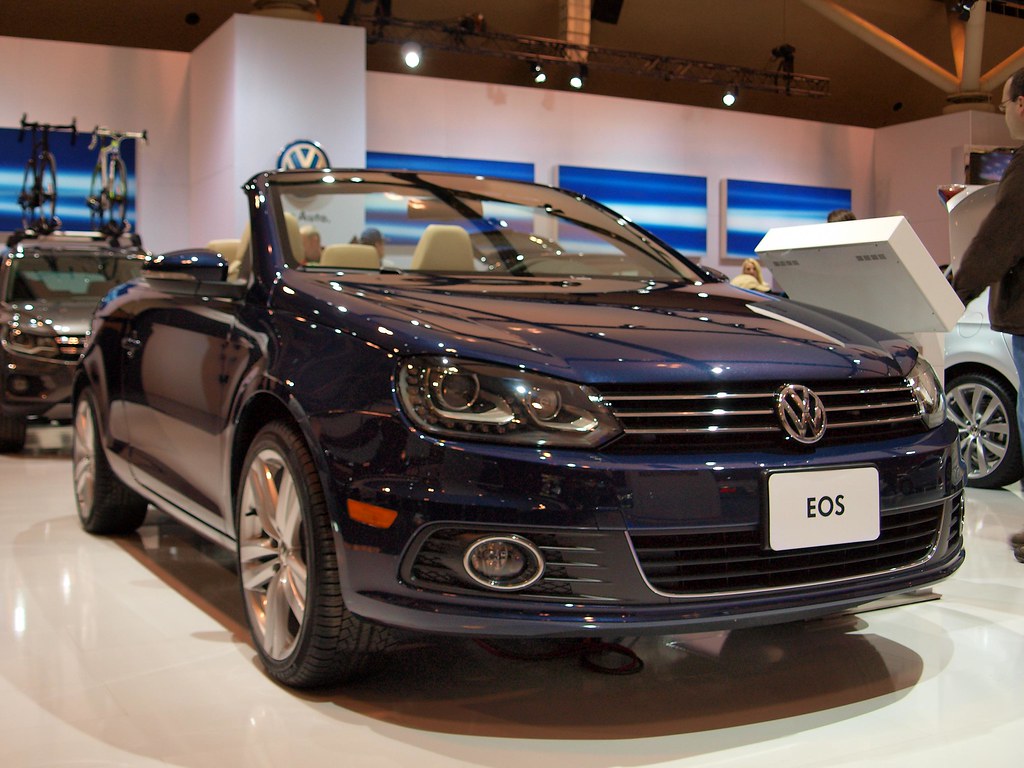
11. **Volkswagen Eos – The Clever Convertible We Forgot Too Soon**
In a world increasingly obsessed with SUVs and crossovers, it’s easy for some truly unique and charming vehicles to get lost in the shuffle. The Volkswagen Eos is a prime example of such a car – often overlooked, it’s one of those Volkswagens that many might even forget was still in production as recently as 2016. But for those who knew it, the Eos was a delightful breath of fresh air, a charming two-door convertible that genuinely stood out from the crowd, largely thanks to its innovative retractable hardtop.
This wasn’t just any convertible; the Eos offered the best of both worlds: the sleek, secure lines of a coupe when the roof was up, and the exhilarating open-air freedom of a convertible when it was retracted. Its clever hardtop design was a significant selling point, providing enhanced security and better insulation than traditional soft tops. It added a layer of sophisticated versatility that few competitors could match, making it a compelling choice for drivers who appreciated both style and practicality in their open-top motoring.
Sadly, despite its undeniable appeal and smart engineering, the Eos never quite found its mainstream footing in a market that was rapidly gravitating towards utility vehicles. Convertibles, once a staple of automotive desire, simply don’t hold the same widespread popularity they once did. In an era where every other car seemed to be a towering crossover or SUV, a stylish, two-door convertible, no matter how clever, faced an uphill battle. It makes you wonder, did it really have to disappear so soon?
We often miss the Eos, a quiet casualty of shifting market trends. It shared its clever retractable hardtop philosophy with another noteworthy convertible, the Volvo C70. In fact, if you blinked too fast, you might even mistake the stylish Volvo C70 for an Eos, particularly from the rear three-quarter view, showcasing how well Volvo also nailed this innovative hardtop design. The Eos reminds us that sometimes, even great ideas struggle to survive against the relentless tide of what’s “in,” leaving us longing for the days when a retractable hardtop was a clever solution, not just a forgotten feature.
Car Model Information: 2012 Volkswagen Eos Lux
Name: Volkswagen Eos
Manufacturer: Volkswagen
Production: 2006–2016
Assembly: Palmela
Class: Sport compact
BodyStyle: Convertible
Layout: Front-engine, front-wheel-drive layout
Platform: Volkswagen Group A platform#A5 (PQ35)
Engine: Inline-four engine
Transmission: Manual transmission
Wheelbase: 2578 mm
Abbr: on
Length: 4407 mm
Disp: flip
Width: 1791 mm
Height: 1443 mm
Related: Volkswagen Golf Mk5,Volkswagen Scirocco
Designer: Robert Lešnik
Successor: Volkswagen T-Roc
Categories: 2010s cars, All articles needing additional references, All articles with unsourced statements, Articles needing additional references from March 2021, Articles with short description
Summary: The Volkswagen Eos is a compact two-door, four passenger convertible manufactured and marketed by Volkswagen from 2006 to 2016 — noted for its five-section hardtop retractable roof which itself featured an independently operable glass sunroof. VW marketed the body configuration as a CSC (coupe-sunroof-convertible).
Assembled at AutoEuropa in Portugal, the Eos succeeded the Golf Cabriolet. Eos production ended in May 2015, with a limited number of base trim models marketed as 2016 models in the United States.
The model name derived from Eos, the Greek goddess of the dawn.
Get more information about: Volkswagen Eos
Buying a high-performing used car >>>
Brand: Volkswagen Model: Eos
Price: $9,899 Mileage: 98,336 mi.
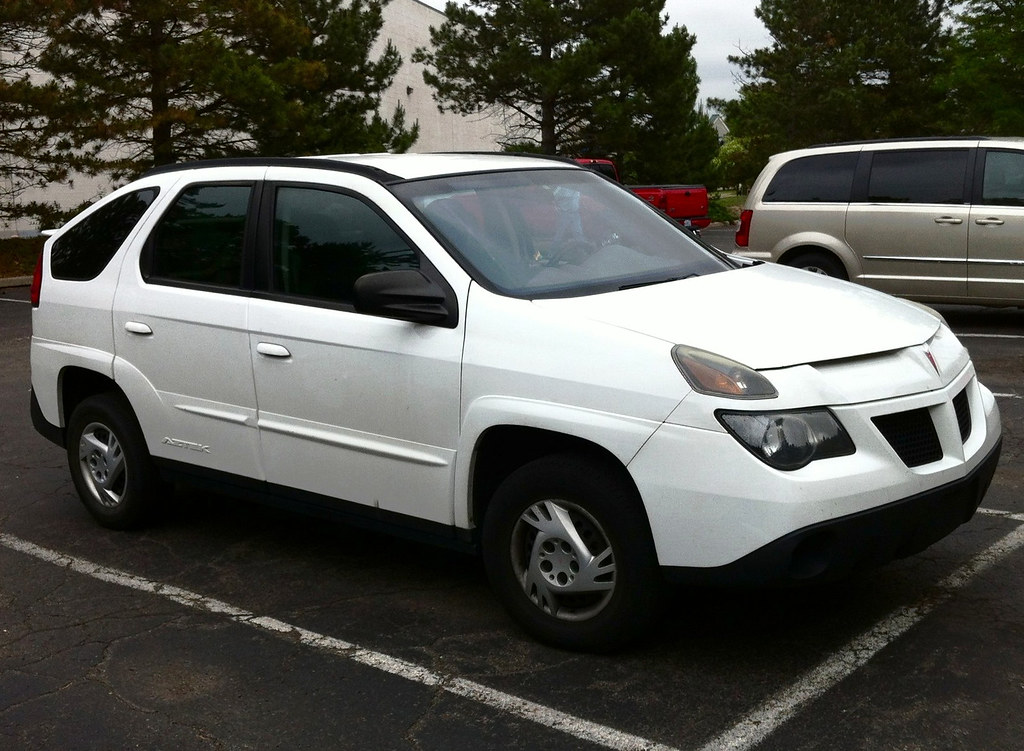
12. **Pontiac Aztek – The Polarizing Pioneer That Found Redemption**
Ah, the Pontiac Aztek. This is a name that often conjures strong opinions, and for good reason! It quickly became a poster child for what some critics deemed ‘ugly’ or polarizing vehicle designs from the moment it debuted. Yet, to dismiss the Aztek simply based on its unconventional looks would be to miss the point entirely. This unique vehicle, produced from 2001 to 2005, was arguably far ahead of its time, a true pioneer in the crossover segment, even if its aesthetics didn’t win universal acclaim.
Beyond its polarizing exterior, the Aztek was packed with features that specifically catered to outdoor enthusiasts. We’re talking about a versatile interior with pull-out cargo trays, a built-in cooler, and even an optional tent accessory that turned the rear of the vehicle into a camping shelter. These innovations, which are common in today’s adventure-oriented vehicles, were revolutionary for its era. It aimed to be the ultimate companion for active lifestyles, offering practicality and utility that few other vehicles could match at the time.
Despite its initial struggle with sales and its design being lampooned by many, the Aztek eventually found a surprising form of redemption. Over time, it developed a devoted cult following, with many appreciating its sheer audacity and its genuinely innovative utility features. Its most prominent resurgence in popular culture, of course, came with its starring role in the critically acclaimed TV show *Breaking Bad*, where it became an iconic symbol for the show’s protagonist, Walter White, transforming its image from automotive punchline to a recognizable, almost cool, pop culture artifact.
Ultimately, the Aztek’s discontinuation was a confluence of factors: its poor initial sales figures that never truly recovered from its divisive design, and the eventual phasing out of the entire Pontiac brand. While it exited the market after a relatively short run, the Aztek’s journey from widely mocked to cult hero is a fascinating one. It reminds us that sometimes, it takes years for a truly pioneering vehicle to be understood and appreciated, proving that bold engineering and quirky design can, against all odds, find its place in the annals of automotive history.
Car Model Information: 2004 Pontiac Aztek 4dr All Purpose FWD
Name: Pontiac Aztek
Manufacturer: General Motors
Production: July 2000 – December 2004
Assembly: Ramos Arizpe
Designer: Tom Peters (chief designer: 1997)
Class: Mid-size crossover SUV
BodyStyle: SUV
Platform: GM U platform
Related: Buick Rendezvous
Layout: Front-engine, front-wheel-drive layout
Engine: General Motors 60° V6 engine#LA1,V6
Transmission: GM 4T65-E transmission,Automatic transmission
Wheelbase: 108.3 in (2,751 mm)
Length: 182.1 in (4,625 mm)
Width: 73.7 in (1,872 mm)
Height: 66.7 in (1,694 mm)
Weight: 3,779–4,043 lb (1,714–1,834 kg)
Predecessor: Pontiac Sunrunner
Successor: Pontiac Torrent
ModelYears: 2001–2005
Categories: All-wheel-drive vehicles, All articles needing additional references, All articles with unsourced statements, Articles needing additional references from October 2013, Articles with short description
Summary: The Pontiac Aztek is a mid-size crossover SUV marketed by General Motors introduced in 2000 for the model years 2001 through 2005. As a four-door crossover with front-wheel drive and optional all-wheel drive, the Aztek featured a four-speed automatic transmission with a V6 engine. Marketed by Pontiac as a “sport recreational vehicle,” the Aztek used a shortened platform shared with GM’s minivans (e.g., the Pontiac Montana) featuring 94 cubic feet of cargo room with its rear seats removed. The design employed conventional rear outswing doors rather than sliding doors, and a split rear tailgate, the lower section formed with seat indentations and cupholders. Other features included a front center console that doubled as a removable cooler, optional rear stereo controls in the cargo area, optional sliding cargo floor with grocery compartments, and optional camping package with an attachable tent and air mattress.
Get more information about: Pontiac Aztek
Buying a high-performing used car >>>
Brand: Pontiac Model: Aztek
Price: $995 Mileage: 0 mi.
Read more about: Miles of Misery: 14 Vehicles Drivers Can’t Wait to Ditch
So there you have it, a deeper look into the ‘Early Exit Club’ – a collection of cars that, for various reasons, left the automotive stage far too soon. From rugged off-roaders craving a comeback to hypercars that redefined performance, and from innovative convertibles that got lost in the shuffle to polarizing pioneers that found pop culture redemption, each of these vehicles tells a unique story about the delicate balance between innovation, market demand, and sheer automotive passion. These are more than just discontinued models; they’re reminders that sometimes, the greatest treasures are those that dared to be different, leaving behind legacies that only grow stronger with time. Which of these cool cars do you think deserved a much longer run, or even a shot at a modern revival? Let us know!

